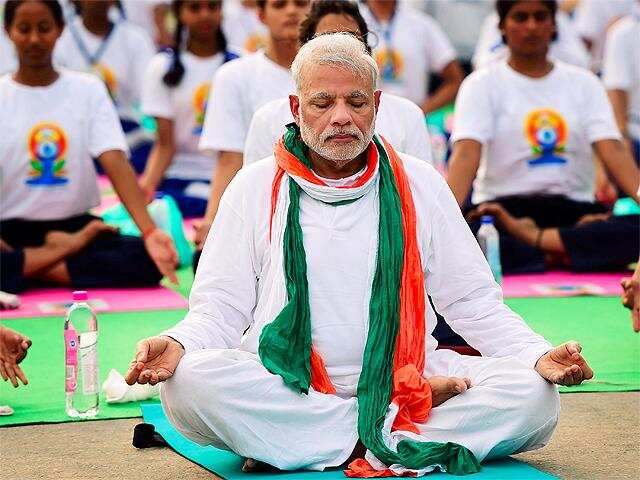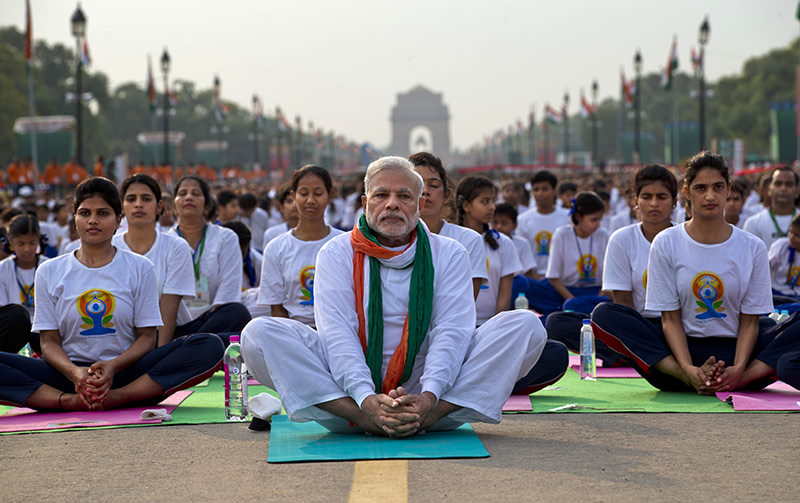Trump, the SCO Summit, and the Case of the Missing Tariffs
Ah, the SCO Summit: Eurasia’s hottest ticket, the geopolitical equivalent of Coachella—if Coachella featured trampoline diplomacy, disco communism, and yoga diplomacy with flower crowns. All the cool kids were there. Well, almost all. Missing from the glittering guest list? Donald J. Trump.
Yes, folks, the man who once turned global summits into reality TV specials (complete with walk-offs, Sharpies, and handshake wars) was left home like that uncle who insists “hot dogs don’t expire if you freeze them”. No invite. No cameo. Just Trump, alone at Mar-a-Lago, clutching a Diet Coke and rage-scrolling like a teenager grounded from Fortnite.
And why? Because some meddling court had just ruled his beloved tariffs illegal. Tariffs! His security blanket, his magic trick, his one-word bedtime lullaby: “Tariffs… tariffs… sweet, beautiful tariffs.” Gone. Poof. Null and void. Without tariffs, Trump is basically a magician who’s lost his rabbit, his hat, and half his audience.
Meanwhile, at the SCO Party of the Year
Picture Trump flicking through TV channels like a man possessed. CNN? SCO coverage. Fox? SCO coverage. Even the Golf Channel is replaying SCO highlights because apparently nothing screams “swing analysis” like Xi Jinping moonwalking.
-
Vlad the Trampoliner: Putin, in his judo gi, bouncing sky-high in a summit bounce house, yelling “Da! Higher! Make geopolitics boing again!” before high-fiving Iran’s president and challenging Kazakhstan to a bounce-off. Trump squints. “Vlad? Fun? Since when does he… boing?”
-
Modi the Yoga Influencer: On a man-made beach, Modi’s twisting into human origami, leading a sunrise yoga class with the line: “Inhale peace, exhale tariffs.” Delegates chant. Brazilians join in. Someone starts live-streaming on TikTok. Trump mutters, “Yoga? I do yoga. Tremendous yoga. Nobody yogas better than me.” He then tries downward dog in his recliner and immediately pulls a hamstring.
-
Xi the Disco Machine: And then, Xi Jinping. The man usually stiffer than a marble bust, suddenly busting moves on the dance floor. Robot, Gangnam Style, even a moonwalk that would make Michael Jackson jealous. Pakistani PM Sharif joins for a conga line. Xi shouts over the strobe lights: “One Belt, One Road, One Groove!” Trump nearly chokes on his Diet Coke. “Xi? Dancing? No fair. I dance! I do the Trump Shuffle at rallies! Very classy dance. They loved it in Tulsa.”
Trump in Exile: Tariffless and Fun-less
Four days of pure torture. No headlines. No rallies. No golf scorecards to “accidentally” improve. Just Trump pacing his Mar-a-Lago ballroom muttering, “Without tariffs, what am I? Just… just a guy with beautiful hair!”
The news chyrons are merciless:
-
“Trump Missing as SCO Goes Full Vegas.”
-
“Court Bans Tariffs: Trump Bans Fun.”
-
“Xi’s Moonwalk Steals Spotlight—Trump MIA.”
At last, desperation strikes. He grabs his trusty Sharpie and drafts a letter to Modi, dripping with flop-sweat and McDonald’s grease stains:
"Dear Narendra (can I call you Naren? Big friends, huge friends),
Don’t dance with Xi. He’s not fun. I’ve got the moves. Believe me. Putin’s trampoline? FAKE. Probably wires. SCO is rigged. Totally rigged. Ditch them. Invite me. We’ll do Mar-a-Lago limbo. The best limbo. Nobody limbos like me. Yours truly, Donald.
P.S. Yoga’s overrated. Try shuffleboard. Tremendous shuffleboard.”
He seals it with a kiss (gold lipstick, limited edition) and dispatches it by whatever billionaire courier service is faster than DHL but somehow dumber.
The Sad Shuffle
As the SCO winds down with karaoke night (Putin belting “I Will Survive,” Xi nailing the falsetto in “Stayin’ Alive,” and Modi leading the conga to “Jai Ho”), Trump slouches back into his recliner.
“Next year,” he growls at the TV. “Next year, I’ll crash it. Tremendous crash. The best crash. You’ll see. With or without tariffs.”
And thus ends the tragedy of the uninvited: a man, a Diet Coke, and a dream of tariffs—forever watching the party of the century from the sidelines.
ट्रंप, एससीओ शिखर सम्मेलन और गायब टैरिफ़ का किस्सा
आह, एससीओ शिखर सम्मेलन: यूरेशिया का सबसे हॉट टिकट, भू-राजनीतिक कोआचेला—अगर कोआचेला में ट्रैम्पोलिन डिप्लोमेसी, डिस्को कम्युनिज़्म और फूलों के ताज वाले योगा सत्र शामिल हों। सब बड़े खिलाड़ी मौजूद थे। खैर, लगभग सब। लेकिन गेस्ट लिस्ट से गायब कौन? डोनाल्ड जे. ट्रंप।
हाँ दोस्तों, वही ट्रंप जिन्होंने कभी अंतरराष्ट्रीय शिखर सम्मेलनों को रियलिटी टीवी शो में बदल दिया था—वॉक-ऑफ्स, शार्पी से नक़्शे, और हैंडशेक की कुश्ती के साथ। लेकिन इस बार? उन्हें घर छोड़ दिया गया, जैसे वो चाचा जो ज़िद करते हैं कि “हॉट डॉग फ्रीज़र में रखने से कभी खराब नहीं होते।” कोई बुलावा नहीं। कोई कैमियो नहीं। बस ट्रंप, मार-ए-लागो में अकेले, डायट कोक पकड़े हुए और इस तरह स्क्रॉल कर रहे जैसे कोई किशोर जिसका फोर्टनाइट छीन लिया गया हो।
क्यों? क्योंकि एक अदालत ने अभी-अभी उनके प्यारे टैरिफ़ को ग़ैरक़ानूनी घोषित कर दिया था। टैरिफ़! उनका सुरक्षा कंबल, उनका जादुई खेल, उनका सोने से पहले का लोरी-मंत्र: “टैरिफ़… टैरिफ़… मीठे, खूबसूरत टैरिफ़।” अब गए। खत्म। गायब। टैरिफ़ के बिना ट्रंप वैसा जादूगर है जिसने खरगोश भी खो दिया, टोपी भी, और आधा दर्शक भी।
इस बीच, एससीओ पार्टी का जलवा
ट्रंप चैनल बदलते जा रहे हैं जैसे आत्मा-ग्रस्त। सीएनएन? एससीओ। फॉक्स? एससीओ। यहाँ तक कि गोल्फ चैनल भी एससीओ की हाईलाइट्स दिखा रहा है, क्योंकि जाहिर है कि शी जिनपिंग मूनवॉक से बढ़कर “स्विंग एनालिसिस” कुछ नहीं।
-
व्लाद द ट्रैम्पोलिनर: पुतिन, अपने जुडो गी में, समिट के बाउंस हाउस में ऊँचाई तक उछल रहे हैं, चिल्लाते हुए “दा! और ऊँचा! जियोपॉलिटिक्स को झूला बनाओ!” फिर ईरान के राष्ट्रपति से हाई-फाइव और कज़ाखस्तान को बाउंस-ऑफ की चुनौती। ट्रंप आँखें मिचमिचाते: “व्लाद? मज़े करते हुए? कब से वो… बाउंस करता है?”
-
योगा इन्फ्लुएंसर मोदी: कृत्रिम बीच पर मोदी सूर्योदय योगा सत्र चला रहे हैं, खुद को प्रेट्ज़ल की तरह मोड़ते हुए और मंत्र जपते: “शांति लो, टैरिफ़ छोड़ो।” ब्राज़ीलियन भी जुड़ जाते हैं। कोई लाइव-स्ट्रीम चालू करता है। ट्रंप बड़बड़ाते: “योगा? मैं योगा करता हूँ। जबरदस्त योगा। कोई मुझसे अच्छा योगा नहीं करता।” फिर कुर्सी पर डाउनवर्ड डॉग करने की कोशिश और तुरंत हैमस्ट्रिंग खिंच जाती है।
-
डिस्को मशीन शी: और फिर, शी जिनपिंग। जो आमतौर पर संगमरमर की मूर्ति जैसे कठोर दिखते हैं, अचानक डांस फ्लोर पर धूम मचा रहे हैं। रोबोट, गंगनम स्टाइल, और एक मूनवॉक जो माइकल जैक्सन को भी जलन दे। पाकिस्तानी पीएम शरीफ़ कॉन्गा लाइन में शामिल। शी चिल्लाते हैं: “वन बेल्ट, वन रोड, वन ग्रूव!” ट्रंप लगभग डायट कोक में घुट जाते हैं। “शी? डांस? ये तो चीटिंग है। मैं भी डांस करता हूँ! ट्रंप शफल। बहुत क्लासी डांस। टुल्सा में धूम मचा दी थी।”
निर्वासन में ट्रंप: बिना टैरिफ़, बिना मज़ा
चार दिन की शुद्ध यातना। कोई हेडलाइन नहीं। कोई रैली नहीं। कोई गोल्फ स्कोरकार्ड “गलती से” सुधारने का मौका नहीं। बस ट्रंप मार-ए-लागो में चहलकदमी करते हुए, बड़बड़ाते: “बिना टैरिफ़, मैं क्या हूँ? बस… बस सुंदर बालों वाला आदमी!”
न्यूज़ हेडलाइन बेरहम:
-
“एससीओ हुआ पूरा वेगास, ट्रंप गायब।”
-
“अदालत ने टैरिफ़ रोके, ट्रंप ने मज़े रोके।”
-
“शी का मूनवॉक छाया, ट्रंप नदारद।”
आखिरकार, बेबसी हावी। वो शार्पी उठाते हैं और मोदी को पत्र लिखते हैं, पसीने और मैकडॉनल्ड्स के दागों से सना हुआ:
"प्रिय नरेंद्र (क्या मैं तुम्हें नरेन कह सकता हूँ? बड़े दोस्त, जबरदस्त दोस्त),
शी के साथ मत नाचो। वो मज़ेदार नहीं। मेरे पास मूव्स हैं। यकीन करो। पुतिन का ट्रैम्पोलिन? फेक। ज़रूर तार लगे थे। एससीओ धांधली है। पूरी धांधली। उन्हें छोड़ो। मुझे बुलाओ। हम मार-ए-लागो लिम्बो करेंगे। बेस्ट लिम्बो। कोई मुझसे अच्छा लिम्बो नहीं करता।
तुम्हारा सच्चा दोस्त,
डोनाल्ड।
पी.एस. योगा ओवररेटेड है। शफ़लबोर्ड ट्राई करो। शानदार शफ़लबोर्ड।”
वो लिफ़ाफ़ा चूमते हैं (सोने की लिपस्टिक से, लिमिटेड एडिशन) और अरबपतियों वाली कुरियर सेवा से भेज देते हैं।
उदास शफ़ल
जैसे ही एससीओ का समापन कराओके नाइट से होता है—पुतिन “आई विल सर्वाइव” गाते हुए, शी “स्टेइन’ अलाइव” में फाल्सेटो मारते हुए, और मोदी “जय हो” पर कॉन्गा लाइन लीड करते हुए—ट्रंप फिर से अपनी गोल्डन रिक्लाइनर में धंस जाते हैं।
“अगले साल,” वो टीवी से गुर्राते हैं। “अगले साल, मैं धावा बोलूँगा। जबरदस्त धावा। सबसे बढ़िया धावा। तुम देखना। टैरिफ़ हों या न हों।”
और इस तरह ख़त्म होता है अनबुलाए का दुखद किस्सा: एक आदमी, एक डायट कोक, और टैरिफ़ का सपना—हमेशा पार्टी को टीवी से देखते हुए।
“Trump Furious After Being Snubbed From SCO Summit Bounce House; Demands Rematch in Mar-a-Lago Limbo Contest”
PALM BEACH, FL—Seething in his gold-plated recliner after courts struck down his beloved tariffs, Donald Trump raged at TV footage of Putin trampoline-flipping, Modi leading beach yoga, and Xi moonwalking. Sources say the president has vowed to crash next year’s summit—armed with Sharpies, Diet Coke, and what aides describe as “the most tremendous limbo moves in history.”
🇮🇳 Hindi Version
“एससीओ समिट के बाउंस हाउस से ट्रंप की छुट्टी; बोले—मार-ए-लागो लिम्बो में रीमैच चाहिए”
पाम बीच, फ्लोरिडा—अपनी सुनहरी कुर्सी में बैठकर अदालत द्वारा टैरिफ खारिज किए जाने के बाद गुस्से में फुफकारते ट्रंप टीवी पर पुतिन के ट्रैम्पोलिन फ्लिप, मोदी के बीच योगा और शी जिनपिंग के मूनवॉक को देखते रहे। सूत्रों का कहना है कि पूर्व राष्ट्रपति अगले साल का समिट ध्वस्त करने का प्लान बना रहे हैं—शार्पी, डायट कोक और “इतिहास का सबसे जबरदस्त लिम्बो मूव” लेकर।
🇳🇵 Nepali Version
“एससीओ समिटको बाउन्स हाउसम्बाट ट्रम्प आउट; भन्छन्—मार-ए-लागो लिम्बोमा रीम्याच चाहिन्छ”
पाम बीच, फ्लोरिडा—अदालतले ट्यारिफ खारेज गरेपछि सुनको कुर्सीमा बस्दै रिसले फुकेको ट्रम्पले टिभीमा पुटिनको ट्र्याम्पोलिन फ्लिप, मोदीको बीच योगा र शी जिनपिङको मूनवाक हेरे। स्रोतका अनुसार पूर्व राष्ट्रपति अर्को वर्षको समिट ‘क्र्यास’ गर्ने तयारीमा छन्—शार्पी, डायट कोक र “इतिहासकै जबरजस्त लिम्बो मूभ्स” सहित।





